Art World
Performance Art Has Always Been About Intimacy. Can It Make It Through the Social-Distancing Era With Its Soul Intact?
Artists around the world are exploring new directions for the medium.
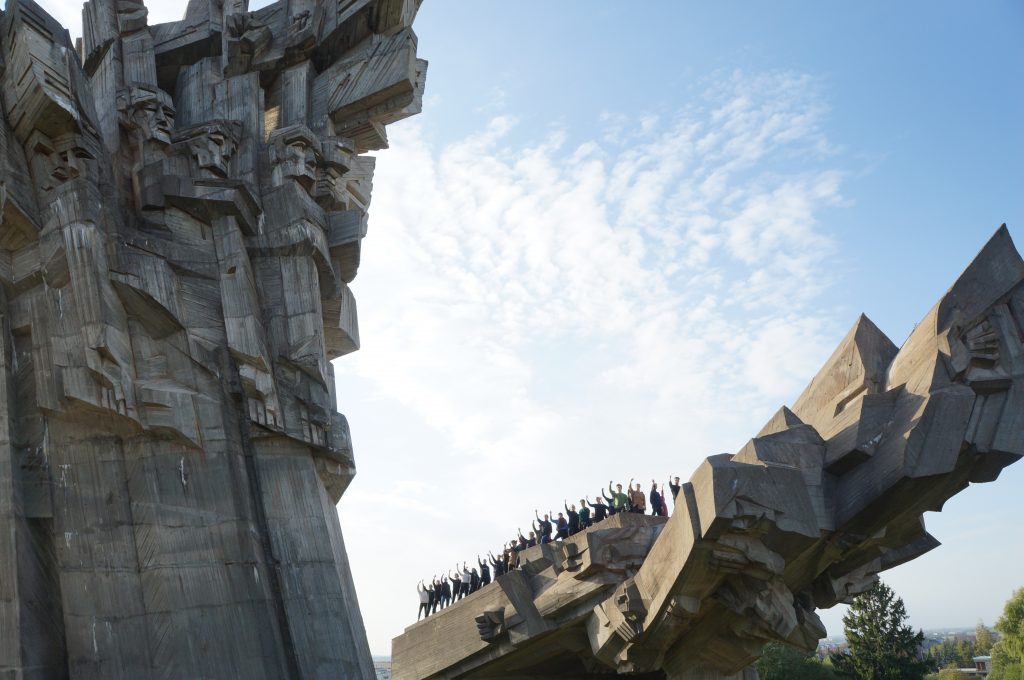
Artists around the world are exploring new directions for the medium.

by
Dorian Batycka

It’s been nearly a year of screen-based art viewing for most of us, but over the summer, some lucky viewers were able to catch a glimpse of in-person performance art during a brief moment of respite in between lockdowns. After months of sheltering in place, Marina Abramović’s highly anticipated opera in Munich and a brand new Tino Sehgal piece in Vienna offered a breath of fresh air—even if from behind masks and in controlled spaces with one-tenth of the normal audience.
As summer has given way to a fall and winter marked by increased social-distancing measures and further lockdowns, in-person performance art looks increasingly like it will be forced to transform again for the foreseeable. As a medium built on intimacy and in-person connection, how, exactly, can it adapt?
Those who know the genre best seem cautiously optimistic. “I predict that we will have a surge of startling new and inventive work in film and video,” says RoseLee Goldberg, director and chief curator of Performa, a biennial in New York City that is planning an eight-hour virtual telethon of newly commissioned performances on November 18. “Performance thrives in difficult times.”
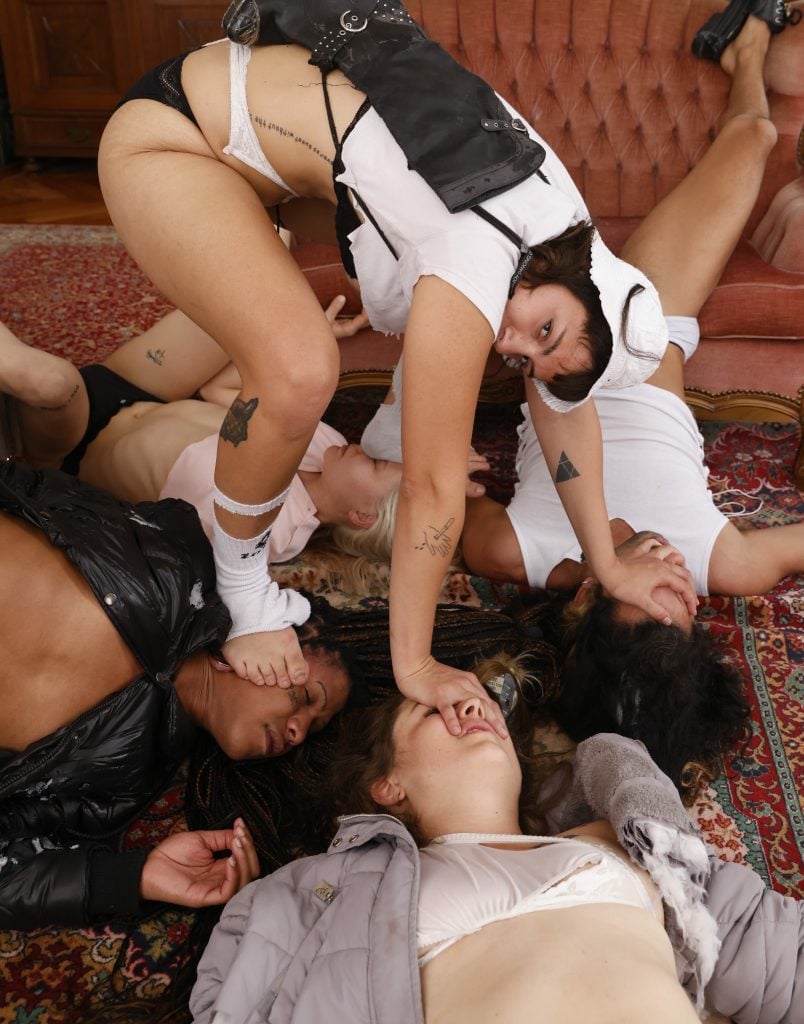
Young Boy Dancing Group: Slim Soledad, Julieta Omil, Lilly Pfalzer, Nicolas Roses, Maria Metsalu, Manuel Scheiwiller, Ursa Premik. Courtesy Young Boy Dancing Group
The most tenuous moments in history can provide fertile ground for new thinking, Goldberg points out. The Surrealist Dada movement, for example, emerged during the 1920s following in the dark years of World War I.
Today, of course, the challenges are different, and much of the transformation performance art will undergo is in its very format. Goldberg is sure that there will be new “demands” within the field, especially as documentation gets folded into the work itself.
Around the globe, performance-art purveyors are embracing film and other new modes of dissemination. In London, Catherine Wood, curator of performance at the Tate Modern, has been focused on this transition. When the coronavirus hit at the beginning of this year, Wood saw both a challenge and an opportunity as she reworked planned projects.
Tired of “seeing bad secondhand documentation of performances that I hadn’t been at,” she says, and frustrated by YouTube, the institution’s performance curators are now working much more closely with Tate’s film curators as they tentatively plan live events for 2021.
After the Tate was forced to cancel a performance by Congolese artist Faustin Linyekula when the pandemic broke out, Wood and Linyekula rethought the work, ultimately performing it to a camera inside the now-empty cavernous performance space the Tanks after only a few hours of rehearsals. Part of it can still be viewed online, giving the work more permanence and viewership than it might have otherwise had.
Just because intimacy can’t be experienced in person doesn’t mean that it can’t also be experienced online, Wood points out. “All the experimentation with performing simultaneously for a camera and to a small live audience will be fruitful in terms of our understanding of what ‘liveness’ means,” she says. Still, she cautions that institutions must remain nimble and respond to changes swiftly as the very concept of “live art” gets redefined.
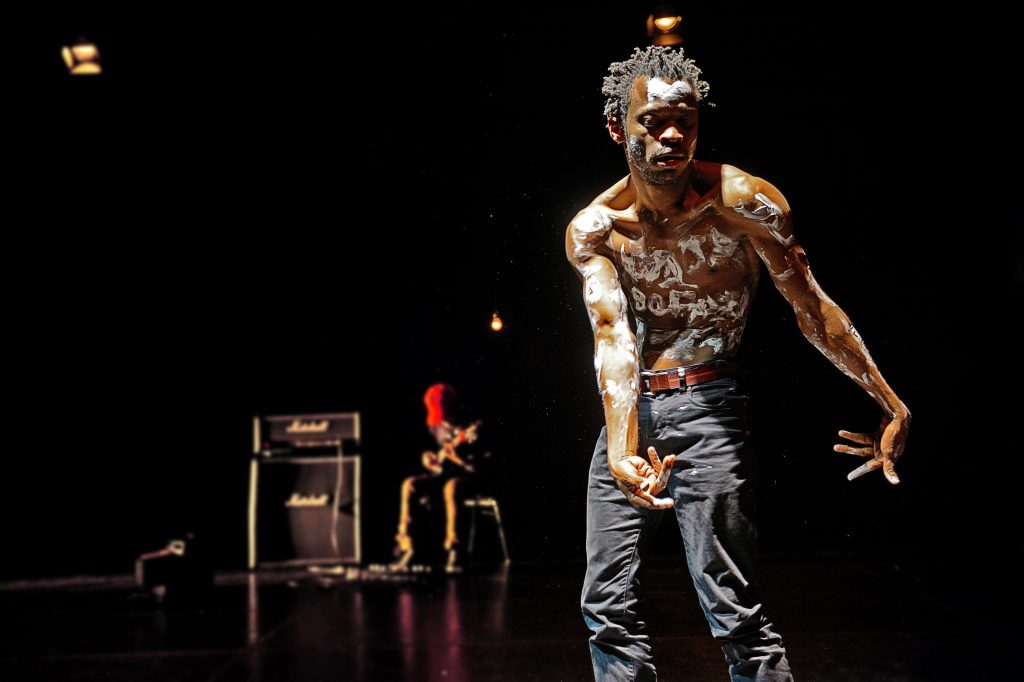
Faustina Linyekula © Andreas Etter
At a hushed Berlin Biennale this past September, notably without parties or opening events, only a handful of performances were able to take place. Balz Isler, Emma Howes, and Justin Kennedy staged their “lucid sci-fi opera” at Martin-Gropius-Bau; the hourlong performance saw the trio delve deep into themes ranging from fungal networks to spirits to automation and androgyny, all in front of several dozen audience members spaced out across the museum’s foyer. In addition to the event, the trio disseminated aspects of the work via a zine and mixtape.
“Body-based art will always adapt,” says Justin Kennedy. “It’s a way for us to rethink venue and event, it’s calling for a downsize on all levels—small, more intimate things.”
“We wore our underwear in Gropius Bau to emphasize this intimacy,” Howes adds. “This is our space, too.”
The gender-bending performance art ensemble Young Boy Dancing Group, known for their transgressive and at times dangerous performances intimately close to large crowds, staged two works in October, right before many European capitals were forced into their second wave of closures.
Events had to be organized at the last minute to accommodate the potential for postponement or cancellation, including of flights. “With several members of our core group dispersed across different countries, planning and logistics were difficult,” says founding member Manuel Scheiwiller.
They managed to stage a new work in Ljubljana in October at the project space Fotopub (which, full disclosure, was curated by this writer). To accommodate the rapidly changing regulations as COVID-19 began to resurge, the piece turned into a film shoot, making the event legally permissible.
“In the long run, we always wanted to produce more videos,” Scheiwiller says. While fees for performers have remained stable, the pandemic has prompted the group to think about production funding for the first time. “We are using this COVID-19 calmness to get more professional and focused,” he says. “This slowing down of the cultural sector feels very good.”
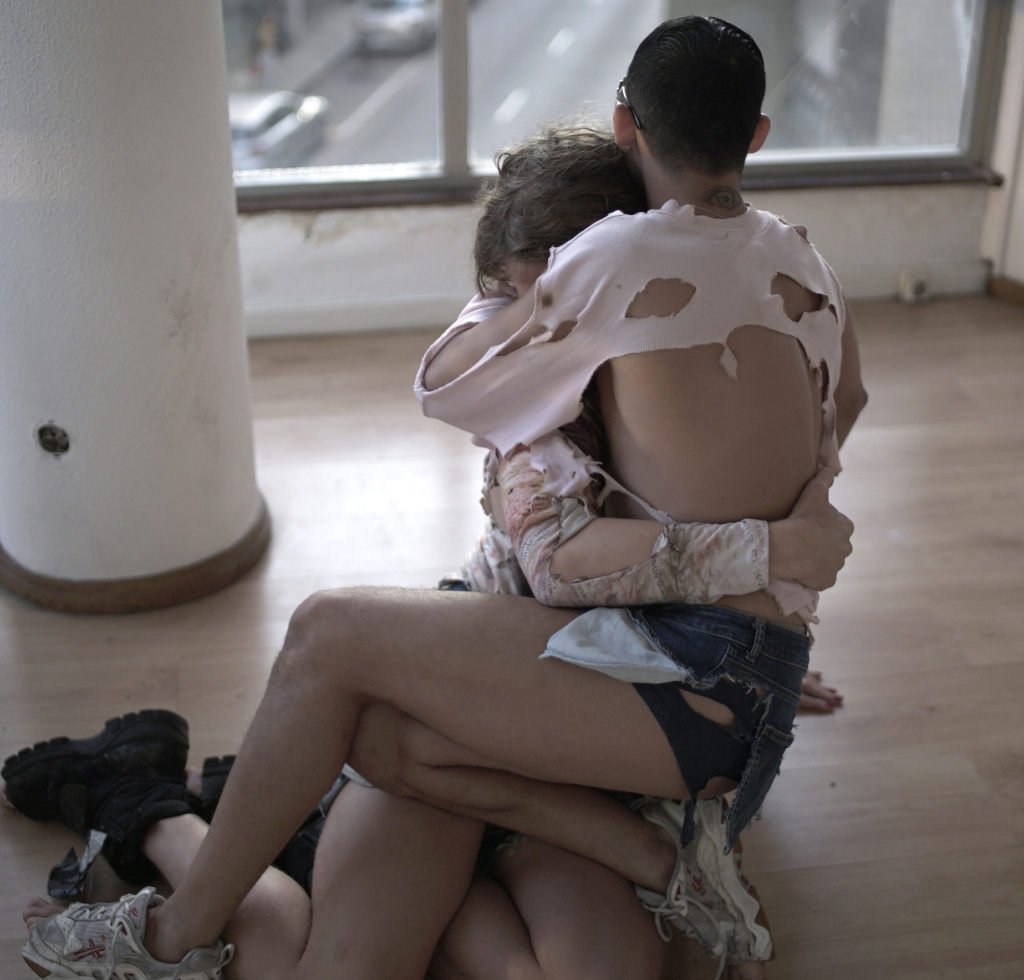
Sculpture without Audience. 2017. Performance with Maria Metsalu, Nicolas Roses, Manuel Scheiwiller, Michelle Rizzo, Cassie Malte Augusta
Critically acclaimed performance artist Alexandra Pirici thinks that the current identity crisis facing performance art preceded the pandemic. “When we start thinking about performance as an ‘event,’ as something spectacular, the problem appears,” she says. The Romanian artist felt the medium was being misused “for the attention economy, to attract large crowds and encourage Instagram posts.”
Fortunately, Pirici was also one of the few performance artists who was able to realize an in-person piece this year, albeit outside. Her work, Pulse, took place over two days in October at the base of a memorial to Nazi victims in Lithuania. Together with a group of about 50 other performers, she attempted to create a “sculptural addition of live presence and living bodies” to support the monument in its anti-Nazi mission.
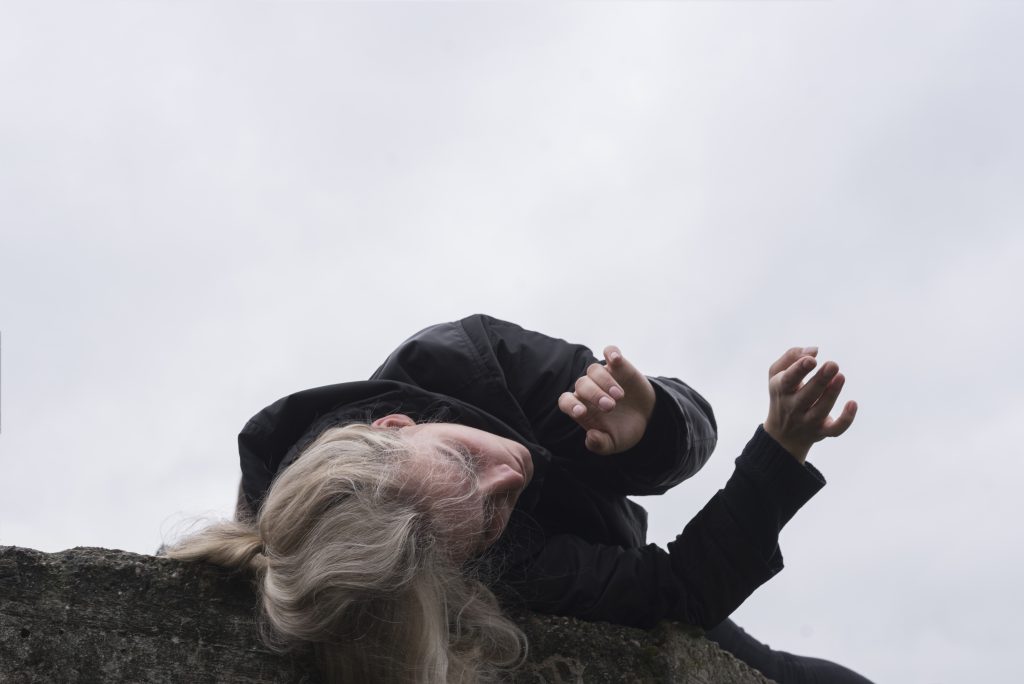
Alexandra Pirici, Pulse (2020). Photo by Lukas Mykolaitis.
And though the work had to be readjusted to meet COVID-19 protocols, it remained a poignant testament to the power of performance art. Though performers were spaced out, not touching as they usually would, the message of togetherness remained. Performance doesn’t always need to involve “touch or closeness” to be effective, the artist says.
Scheiwiller from Young Boy Dancing is similarly optimistic about the current challenges fueling innovation. “[Our group] is and always has been about improvising,” he says. “I don’t feel at all that we had to compromise.”
The social-distancing era may force performers to reconsider the meaning of live art and the definition of connection, but they remain committed to the genre as a means of exploring these subjects. “With our work, we always wanted to create bondings and allyship between the performers and with the audiences and the musicians,” Scheiwiller says. “The pandemic teaches us solidarity.”